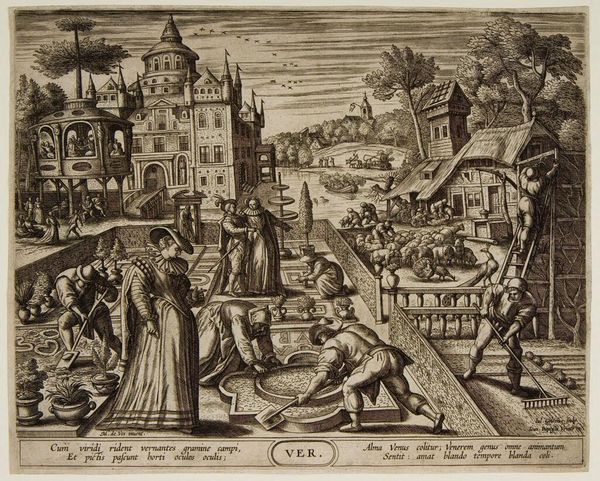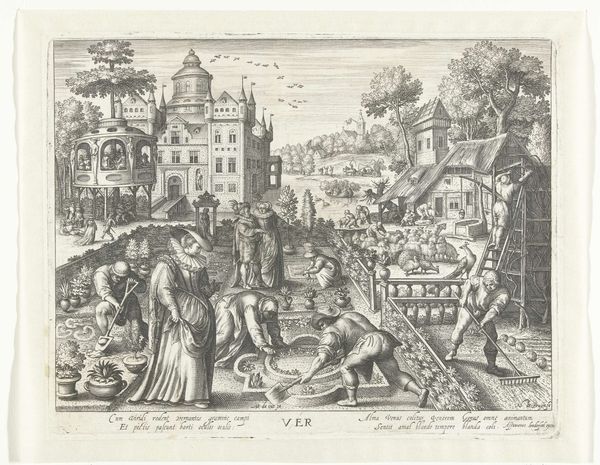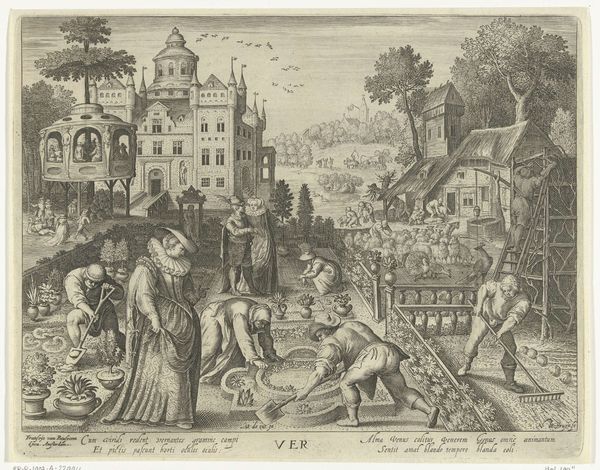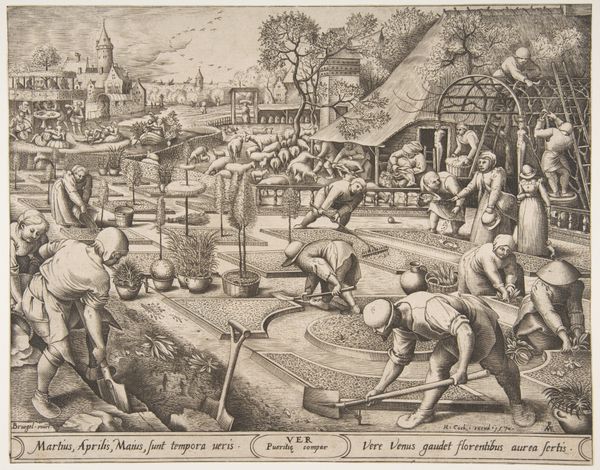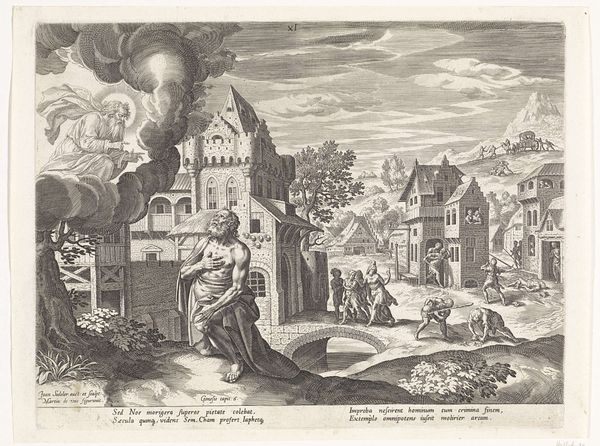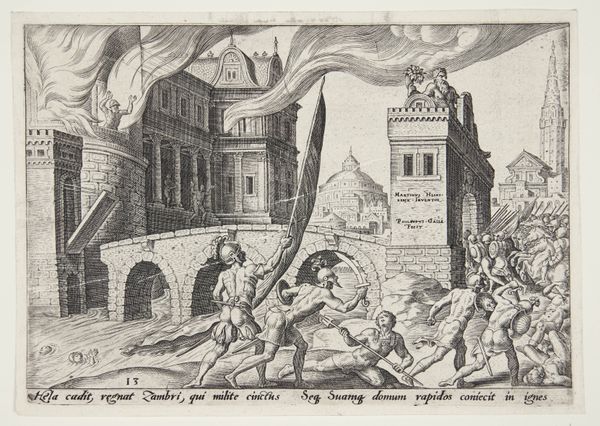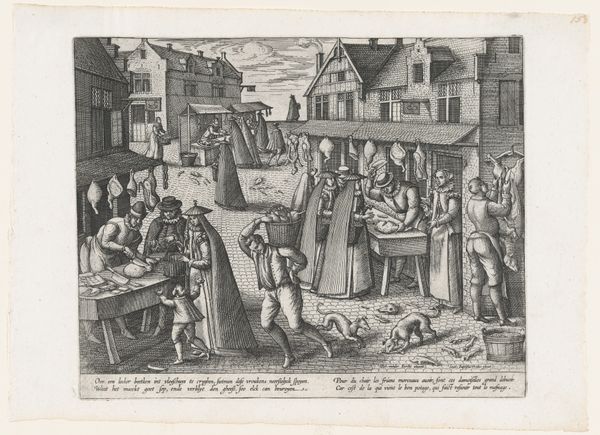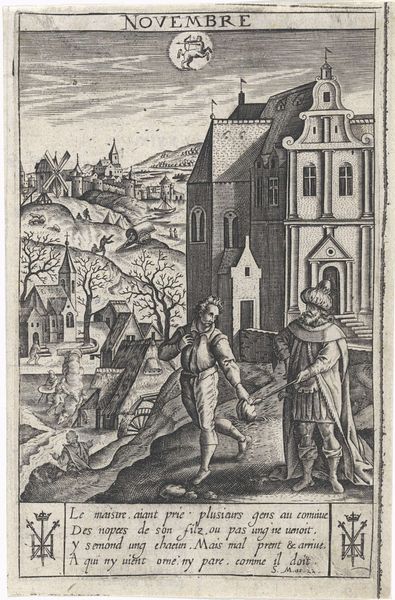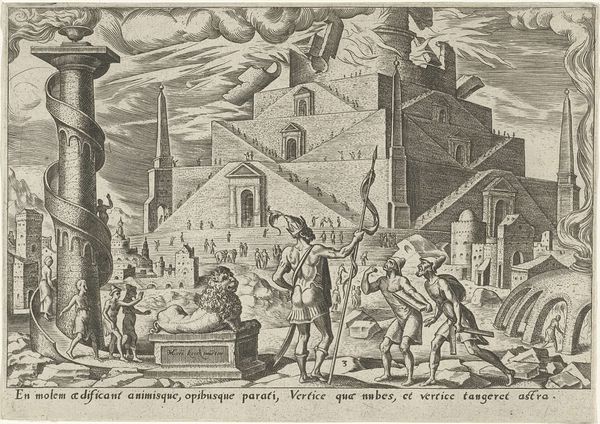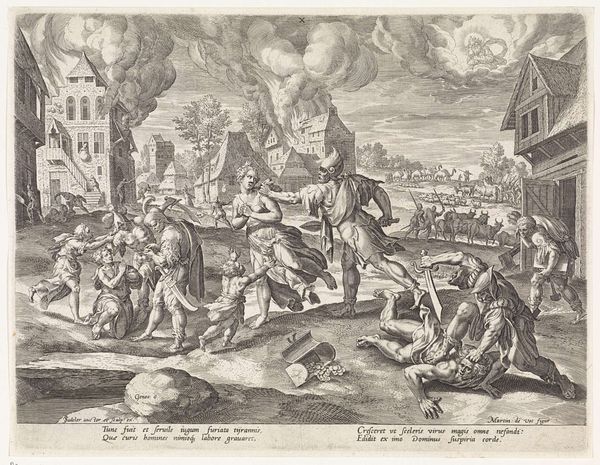
engraving
#
landscape
#
genre-painting
#
northern-renaissance
#
academic-art
#
engraving
Dimensions: width 283 mm, height 224 mm
Copyright: Rijks Museum: Open Domain
Editor: This is "Lente" – "Spring" – an engraving by Julius Goltzius, created sometime between 1575 and 1595. It’s a really busy scene, but the division between the elegant figures on the left and the laborers on the right strikes me. What do you see in this piece, especially when considering that social contrast? Curator: That's a crucial observation. Goltzius isn't just depicting a season; he's portraying a structured social order. Consider the way the wealthy are presented versus those who work. What does it mean that those of high social status seem completely detached from the labor? The artist positions them to essentially benefit from that labor, yet also distance themselves. Editor: So, it’s not just about springtime and growth but about who gets to enjoy that growth? The refined garden is made possible by the toil of the lower classes. Curator: Precisely! And it is more insidious. Their apparent refinement depends on the exploited labour. It is hard not to think about exploitation, and gender. Springtime often equates to themes of love, pleasure, and even licentiousness – a reference to Venus in the caption reinforces that association, but those things remain strictly within reach only for members of a very specific caste. Think about who is barred from that enjoyment. Where are the working women here? Editor: It's interesting how a seemingly innocent depiction of Spring reveals such a critical commentary on social and gender inequalities of the time. Curator: Exactly. The apparent "academic" nature of the landscape masks a deep interrogation of power, labor, and enjoyment that resonates even today. Editor: It makes me think about the systems that still operate like that. I'll definitely look at these images of landscapes differently. Curator: And that’s precisely why art history, viewed critically, becomes such a potent tool. It reflects not just history, but our present.
Comments
No comments
Be the first to comment and join the conversation on the ultimate creative platform.
